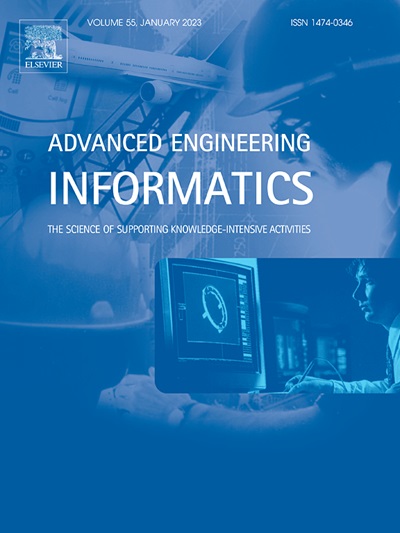生成式人工智能在结构健康监测视觉技术中的变革作用:最新的回顾
IF 9.9
1区 工程技术
Q1 COMPUTER SCIENCE, ARTIFICIAL INTELLIGENCE
引用次数: 0
摘要
随着城市化进程的加快,老化的基础设施对结构健康监测提出了更高的要求。人工智能(AI)和计算机视觉技术的日益融合,大大提高了损伤检测的准确性,同时减少了检测时间和运营成本。尽管有这些优势,但由于与数据相关的挑战,在基础设施维护中采用基于人工智能的技术仍然有限。一个主要问题是缺乏全面的、特定于任务的注释数据集。另一个问题是无人机或移动设备拍摄的图像质量差,经常受到噪音、模糊和不一致的照明的影响。尽管生成式人工智能的最新进展为结构健康监测提供了有希望的支持,但目前尚不清楚哪种模型最适合特定任务。本研究探讨了生成式人工智能在结构健康监测中的应用,重点关注有限数据集和低质量图像恢复等关键挑战。该综述涵盖了一系列生成式人工智能技术,概述了它们的原理、优势、局限性和代表性应用,以支持为特定任务选择适当的工具。生成式人工智能模型可以使用有限的训练数据进行准确的图像分割和结构异常检测。本文还探讨了集成多模态生成人工智能以增强人机交互以支持结构健康监测的新机会。提出了一个框架,以简化生成人工智能技术在结构健康监测中的数据增强、图像恢复、损伤检查和人机交互的使用。本文章由计算机程序翻译,如有差异,请以英文原文为准。

The transformative roles of generative artificial intelligence in vision techniques for structural health monitoring: A state-of-the-art review
As urbanization accelerates, aging infrastructure demands more advanced inspection methods for structural health monitoring. The growing integration of artificial intelligence (AI) and computer vision technologies has significantly enhanced damage detection accuracy while simultaneously reducing inspection time and operational costs. Despite these advantages, the adoption of AI-based technologies in infrastructure maintenance remains limited due to challenges related to data. One major issue is the lack of comprehensive, task-specific annotated datasets. Another is the poor quality of images captured by drones or mobile devices, which are often affected by noise, blurring, and inconsistent lighting. Although recent advances in generative AI offer promising support for structural health monitoring, it remains unclear which models are best suited for specific tasks.
This study examines the use of generative AI in structural health monitoring, focusing on key challenges such as limited datasets and low-quality image restoration. The review covers a range of generative AI technologies, outlining their principles, strengths, limitations, and representative applications to support the selection of appropriate tools for specific tasks. Generative AI models enable accurate image segmentation and structural anomaly detection using limited training data. The paper also explores new opportunities for integrating multi-modal generative AI to enhance human–computer interaction in support of structural health monitoring. A framework is proposed to streamline the use of generative AI technologies for data augmentation, image restoration, damage inspection, and human–computer interaction in structural health monitoring.
求助全文
通过发布文献求助,成功后即可免费获取论文全文。
去求助
来源期刊

Advanced Engineering Informatics
工程技术-工程:综合
CiteScore
12.40
自引率
18.20%
发文量
292
审稿时长
45 days
期刊介绍:
Advanced Engineering Informatics is an international Journal that solicits research papers with an emphasis on 'knowledge' and 'engineering applications'. The Journal seeks original papers that report progress in applying methods of engineering informatics. These papers should have engineering relevance and help provide a scientific base for more reliable, spontaneous, and creative engineering decision-making. Additionally, papers should demonstrate the science of supporting knowledge-intensive engineering tasks and validate the generality, power, and scalability of new methods through rigorous evaluation, preferably both qualitatively and quantitatively. Abstracting and indexing for Advanced Engineering Informatics include Science Citation Index Expanded, Scopus and INSPEC.
 求助内容:
求助内容: 应助结果提醒方式:
应助结果提醒方式:


